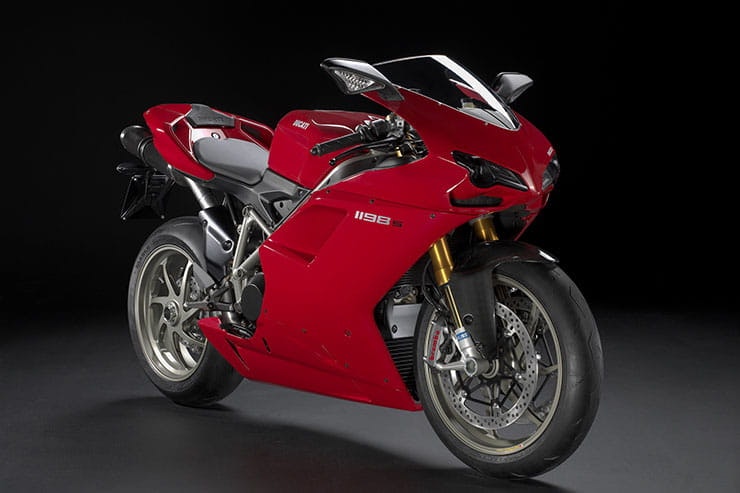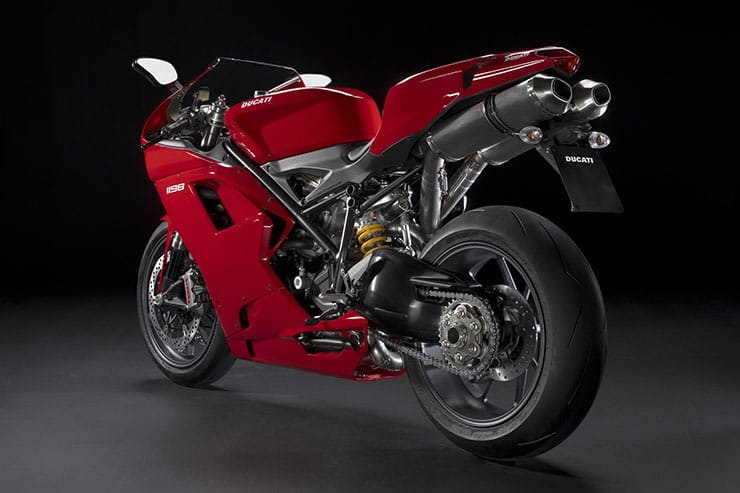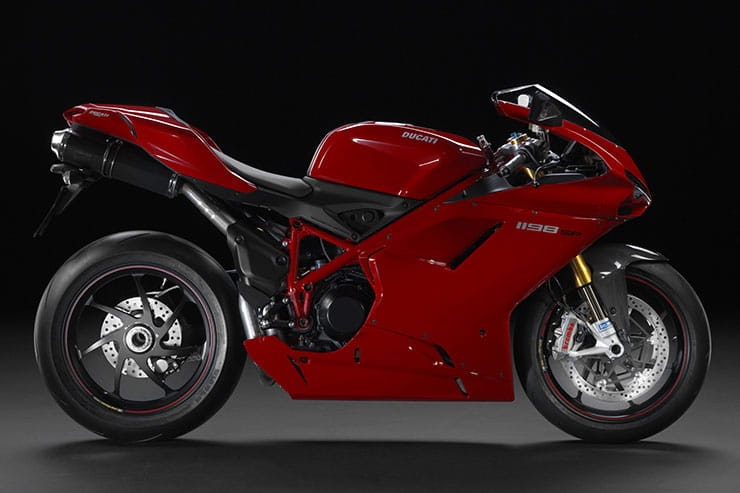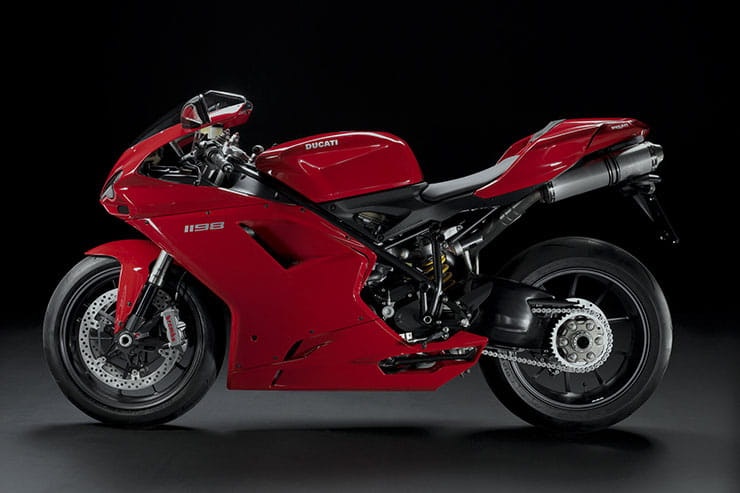Ducati 1198 & 1198S (2009 - 2011): Review & Buying Guide
By Jon Urry
Massively experienced road tester
09.01.2023
Having well and truly put the 999 fiasco behind them with the stunning 1098, which unsurprisingly had more than a passing resemblance to the 916’s silhouette, by the end of 2008 Ducati needed to up their game. As well as the new breed of Japanese inline fours to deal with, the 1098 now faced competition from a European V-twin, the KTM RC8, as well as Aprilia’s RSV4. Ducati already knew the answer, they had been running a bigger capacity version of the Testastretta Evoluzione engine since 2008 in the 1098R, so for 2009 they took the decision to roll a version of this gutsier V-twin into their mass-produced road bikes, creating the 1198 and 1198S. The results were spectacular. Arguably (when you consider reliability, looks and build quality) the best V-twin superbike Ducati have ever made (it won a brace of WSB titles, unlike its successor the Panigale, which failed to win any...) the 1198 and even more impressive 1198S are sublime machines not only to look at but also to ride. A little bit intimidating it has to be said, but truly staggering nonetheless...
Ducati 1198 and 1198S (2009 - 2011) Price
The 1198 cost a hefty £12,995 in 2009 with the extra bling on the 1198S upping this to £16,496. Nowadays the cheapest 1198 will set you back in the region of £8000 while a tidy example is closer to £9000. Prices for the S model start at £9000 for a well-used example but realistically you need to budget £9500-10,000 for a good one. But that’s just the start, late in the model’s lifespan (2010 and 2011) Ducati released SP and Corse 1198S models. The Corse bikes came with aluminium tanks and a special paint scheme while the SP (which technically replaced the S model) featured a slipper clutch and quickshifter. Prices for the Corse start at £14,500 while the SP is around £12,000.
Power and torque
On the 1198 models the power and torque of the 1198cc Evoluzione engine is a bit of a mixed bag. While undeniably incredibly impressive, and equating to a genuine 156bhp and 123Nm of torque at the rear wheel, it can also be a bit too much of a good thing. Where the smaller capacity 1098 models are fairly relaxed at lower revs, the 1198 with its boosted capacity can be a bit too eager to drive forward, making for a slightly intimidating ride – something that isn’t helped by quite a direct throttle response. You really do need to treat the throttle with respect on an 1198 and if you get a bit too gung-ho, it is quite easy to get caught out by the monstrous amount of low-down and very instant drive. That said, when you get the bike rolling the 1198 motor is a thing of great beauty and as well as huge amounts of mid-range grunt, has searing top-end performance to boot. Brutal, raw and a tiny bit scary, it is a stunning motor and one that has certainly withstood the test of time.
Engine, gearbox and exhaust
The Testastretta Evoluzione motor is a really solid unit and when buying used you only need to really worry about service history, which on the 1198 isn’t too horrible thanks to an extended schedule that has recently been retrospectively introduced. The costly ‘desmo’ valve-clearance check service is set at every 7500 miles and the cam belts require changing every five years or 15,000 miles rather than every other year - which is a very good thing as a desmo service will set you back about £800 and a belt swap and service £500. So that’s good news, the bad news is that there are a few things to be wary of. Not many but a few.
With a high 12.7:1 compression ratio, sprag clutches can suffer if the battery isn’t fully charged so ensure the bike turn over briskly on the starter with no untoward sounds. Although the wiring loom is far more robust that other models, the fuel pump relay is a weak point and it is best to change it at every service to avoid getting stranded when (not if...) it fails. A new one is less than £4 so it’s not a huge drama. If the bike feels lethargic, the tank breather is probably blocked and if the dash is flickering, assume the reg/rec is on its way out. Again, simple fixes that can easily be kept on top of through routine servicing by someone who knows their stuff.
Ducati 1198 and 1198S (2009 - 2011) Economy
The 1198 models aren’t the most economical and realistically you are looking at low to mid-30s mpg numbers, which isn’t great and equates to a tank range in the 120-140 mile area. There again, after 120 miles you will probably be wanting to stop and stretch your wrists anyway, so the fuel light illuminating will be quite a blessing...
Handling, suspension, chassis and weight
First of all what are the differences between the stock 1198 and the S model? The base bike runs Showa suspension front and rear where the S has Öhlins, both brands are fully adjustable but the Öhlins shock is full rebuildable where the Showa unit isn’t, which is worth considering on a used bike. That said, the Öhlins forks tend to leak more regularly and require their seals to be changed than the Showa items. Aside from the uprated suspension, the S also has lightweight ‘GP Replica’ 7-spoke forged alloy wheels where the base bike has 10-spoke cast items, helping the S weigh 2kg less than the stocker. Other than these differences, the chassis on the base and S models are identical, which is good news as it is a beautiful chassis.
With the 1098 Ducati managed to remove most of the slightly lazy handling traits that were always apparent in the older 916/996/998/999 models. Feeling far more akin to a Japanese bike with a very direct and positive front end, despite this new agility the 1198s still manage to retain that lovely mid-corner poise that is a trademark of Bologna’s superbikes. And do so while looking absolutely drop dead gorgeous thanks to underseat pipes and a single sided swingarm – which you need to check hasn’t deformed or seized its rear hub! Always ask the seller to demonstrate adjusting the chain’s tension.
Given a smooth stretch of road, few bikes feel or sound as good as a 1198 on song, it really is a very special motorcycle indeed.
Ducati 1198 and 1198S (2009 - 2011) Brakes
Although lacking ABS (this arrived with the Panigale) the 1198 and 1198S’s identical twin Brembo monoblock calipers deliver serious stopping power. Interestingly, the front discs are 330mm in size, which is bigger than the more usual 320mm items you get on Japanese bikes. A full-on superbike-derived braking system, they are more than powerful enough for road or track use and shouldn’t require any updating. Just check for a juddering sensation under braking, they are a semi-floating design and rust can build up on the carrier, causing the disc to be restricted in its movement. If this is the case, clean the disc well with brake cleaner while giving it a wobble to free any sticking areas.
Comfort over distance and touring
While the 1198 models do come with a pillion seat (biposto), it isn’t the best and even a rider will struggle to cover much distance on them. Firm, unforgiving and quite wrist-heavy, the 1198 is designed for fun rather than smashing out miles. Realistically, if you want the punch of a 1198 engine and fancy covering miles, get a Multistrada...
Rider aids and extra equipment / accessories
After the 1098R had introduced traction control into Ducati’s superbike family in 2008, it was rolled out onto the 1198S as the first ‘mass produced’ model to feature the system. Oddly, however, the standard 1098 didn’t get it. That said, both bikes were enabled with Ducati’s datalogging system (DDA), although only the S had it ready to go as standard.
Unlike modern gyroscope assisted (IMU) traction control systems, the 1198S’s DTC (Ducati Traction Control) only uses inputs from wheel speed sensors and if there is a difference between the speed of the front and rear wheels it gets involved by reducing the power via the ignition and fuelling. There are eight-levels of DTC on the 1198S, which can be swapped between via a switch on the lefthand switchgear, and it can also be turned off completely should you wish. While a touch rudimentarily compared to modern systems, it is nonetheless effective and worth keeping turned on just in case.
In terms of accessories, a lot of 1098s tend to stay pretty standard. You get the odd bike that has had the Ducati Performance catalogue thrown at it but the vast majority of owners stop at a set of race cans (ideally Termi or Akrapovic, Arrow are popular), tail tidy, taller screen and maybe the odd billet part here and there. To be honest, that’s about all you need.
Ducati 1198 and 1198S (2009 - 2011) verdict
The 1198 and 1198S are undeniably very special motorcycles, however they are also fairly brutish and despite the fact the S comes with a degree of electronic assistance it is a bit crude by modern standards. That said, as well as looking stunning, the 1198 models are well built and reliable and when that V-twin’s grunt kicks in, they really are remarkable to experience. If you like your twins to look graceful yet also be a tiny bit unruly, the 1198 is for you. A truly great Ducati superbike.
Three things we love about the 1198…
Classic looks brought into the modern era
Stunning performance
Impressive handling
Three things that we don’t…
The instant hit of torque is quite aggressive
Typical running cost issues, although this isn’t as bad as on some Ducatis.
Limited comfort levels.
Ducati 1198 and 1198S (2009 - 2011) spec
Looking for motorcycle insurance? Get a quote for this motorbike with Bennetts bike insurance



